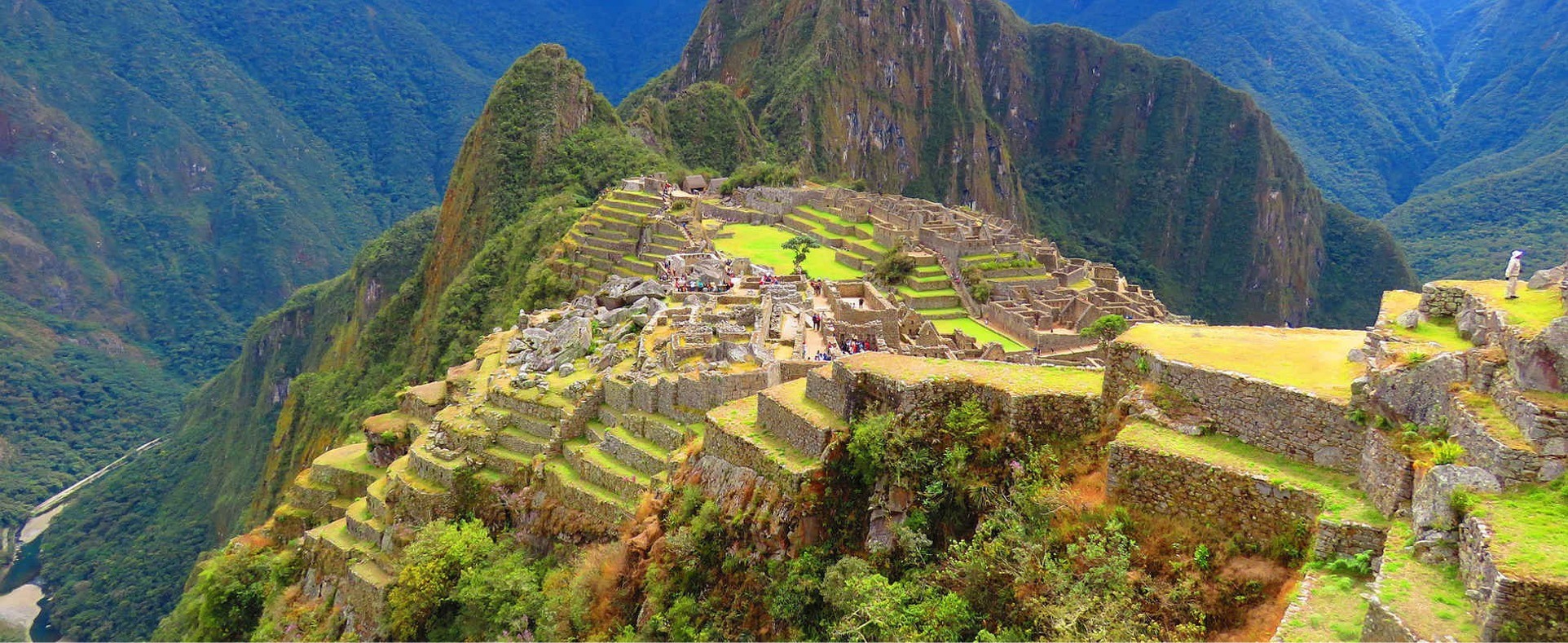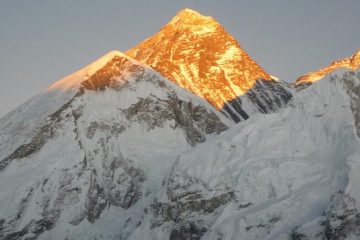Inca Trail 4 day Trek – Services & Prices
VERY IMPORTANT TO BOOK IN ADVANCE FOR 2024!! Trek permits for the Inca Trail are limited to just 500 persons per day and this includes all support staff such as guides, porters, and cooks. Inca Trail trek permits are now on sale so book now to avoid disappointment.
The Inca Trail to Machu Picchu
The appeal of this particular trek is the stunning combination of Inca ruins, magnificent mountains, exotic vegetation and extraordinary ecological variety. The trail goes over high passes with unforgettable views, through cloud forest, and finally into subtropical vegetation.
Accompanied by ATAI CEO & tour leader Keith Black and our local English speaking trail expert while hiking the Classic Inca Trail, you will discover and immerse yourself in the history, the mountains, the vegetation, and wildlife. You will get a closer insight into the Andean way of life.
Over 250 species of orchid have been counted in the Machu Picchu Historic Sanctuary, as well as numerous rare birds, animals, reptiles, including several species considered to be in danger of extinction. In order to complete the Inca Trail, you need to have a reasonable level of fitness, age shouldn’t be a barrier. The most important thing is to be well acclimatized to the altitude. The maximum height above sea level along the way is 4200m / 13,800 ft so we require anyone coming from lower elevations to spend at least 3 days in Cusco before attempting the trek. This period is also ideal for visiting the city of Cusco, the nearby ruins of Sacsayhuaman and the beautiful Sacred Valley of the Incas.
| DEPARTURE/RETURN LOCATION | Cusco, Peru |
| DURATION DAYS | 4 Days (plus 3-4 days acclimation period) |
| DIFFICULTY PRIMARY ACTIVITIES |
Easy to Moderate Trekking and Sightseeing |
| MAX ELEVATION | 13,800 ft – 4200m |
| TRIP ROUTE |
BUS |
| INCLUDED |
Inca Trail & Machu entrance fees 2024 |
| NOT INCLUDED |
international flights |
| CLOTHING & GEAR TO BRING |
Once the expedition is purchase you will be provided with a recommended clothing and gear list. |
***Inca Trail 4 day Group Service ***
Our standard 4-day group service trek is the most popular of the Inca Trail treks. With this service, you join one of our groups so you will find yourself trekking with a variety of like-minded people from all over the world. This service is perfect for individuals, couples and small groups of friends.
Inca Trail Prices
July 2024: US$1,200.00 (minimum 6 persons)
The price INCLUDES the combined Inca Trail trek permit, Machu Picchu entrance fee and all other inclusions as listed above.
We have made every effort to keep our prices very competitive while providing an excellent service and paying our porters 20% above the legal minimum wage agreed with the Porters unions (one of the best rates of pay for porters on the Inca Trail). Our trekking staff are some of the best paid in Cusco which allows us to attract only the best guides, cooks and porters. Please do not ask us to price-match cheaper companies. We feel that the Inca Trail service that we provide is second to none and other trekking companies can only provide a cheaper price by providing a far inferior service and saving on staff costs, porter welfare and taxes.
Trek Permits & Campsites:
The government has strictly limited the number of people permitted on the Inca Trail during 2024 (permits are issued to about 175 trekkers per day plus 325 porters & guides). We recommend that you make a trek booking no later than November 15th, 2023. In 2022 trek permits for some dates sold out more than 7 months in advance !! However don’t make a booking until you have all the group details (names, passport numbers, ages etc.) and you are sure about your trek departure date since these details cannot be changed after we have bought your trek permit.
In 2023 we managed to obtain trek permits for ALL of our clients and were lucky to obtain the campsite Wiñay Wayna on the 3rd night of the trek (the campsite nearest to Machu Picchu) for ALL groups. Camping at Wiñay Wayna allows you to arrive at Machu Picchu for sunrise.
During 2023 the government has decided not to allocate the campsites at the time of buying the trek permits as it has done in previous years. At the moment we understand that the campsites will be allocated just a few days before trek departure and the campsite Winay Wayna will be allocated to the largest sized groups rather than on a first come first served basis. This means it is possible that some of our groups may have to camp at Phuyuptamarca on the 3rd night of the trek (arriving at Machu Picchu for around 10 am).
Inca Trail Trek Departure Dates
July 20th, 2024
Important Note: We will buy your Inca Trail trek permit using the names & passport numbers that you send us with your trek booking application. You must bring these same passports with you to Cusco and take them on the Inca Trail. If the name or number in your passport is different from the name and number on the trek permit, the government authorities WILL NOT allow you to start the trek and you will not be entitled to a refund. If you plan to renew your passport between making the trek booking and actually starting the trek please make sure all information matches the information you provided during the trek booking.
Group Size: Typical group size 08-12 persons, Maximum 16 persons (minimum group size just 4 persons).
Includes:
- Bus transport from your hotel in Cusco to Ollantaytambo, Train transport to Aguas Calientes – 82 km, 45 minutes to the start of the trail.
- Return transport from Machu Picchu to Aguas Calientes. Return transport by train and bus to Cusco.
- Inca Trail & Machu Picchu entrance fees 2024.
- English speaking professional guide.
- 2-man Tents for 2 people.
- Sleeping pad
- Experienced Chef
- Personal porter (to carry 13.2 lbs. of your equipment)
- First aid kit including emergency oxygen bottle
Excludes: International or Domestic Flights, Hotel accommodations in Cusco. Breakfast on the first morning. Some hotels offer an early morning breakfast service. If not, we stop near the town of Ollantaytambo on the way to the start of the trek where you’ll have the opportunity to buy breakfast, Meal (lunch) in a restaurant in Aguas Calientes on the final day. Entrance to the thermal springs in Aguas Calientes (optional), Sleeping bags can be rented in our office for the 4-day trek (every sleeping bag is washed prior to each use), Tips for the guide, cook, and porters. The optional night in Aguas Calientes, along with the associated accommodation, meals, entrance fees, bus tickets etc. are not included. Entrance fee to climb Huayna Picchu (optional) – Huayna Picchu is the tall mountain behind Machu Picchu – entrance tickets to Huayna Picchu should be purchased well in advance online. See our frequently asked questions page for further details.
Important: Possible changes to Inca Trail trek price:
The above Inca Trail prices are based on and subject to change based on the following third-party costs which are outside of our control:
1: Inca Trail Permits (includes Machu Picchu entrance fee)2024
The government reserves the right to increase the entrance fee at any time throughout the year and may only give us one or two weeks notice.
2: Clients will be liable for paying any increased cost of the Inca Trail trek upon arrival in Cusco. Due to the new Inca Trail regulations that limit the number of trekkers on the Inca Trail it should be noted demand for spaces on the trek far outweighs the number of available trek permits. Unlike many trekking companies ATAI has not taken advantage of this situation and in real terms, we have not increased the price of our treks during the last 3 years. We feel that the service we provide is second to none, and the price that we offer is very competitive and offers the best value for our clients.
Inca Trail Trek Permit Status
Inca Trail Trek Permits
date updated 03 March 2023
We will contact you via email to provide you with a confirmation that permits for everyone in your specific group have been successfully purchased.
Porter Welfare
Looking out for our Porters
Without a doubt, for many visitors to Peru, the arrival at the magnificent ruins of Machu Picchu after having completed the Inca Trail is the highpoint of their trip. For others, it is a fulfillment of a lifelong dream. No matter what your religious beliefs are, the Inca Trail really is a special pilgrimage passing through spectacular mountain scenery, beautiful cloud forests with orchids and hummingbirds dotted with Inca ruins, finally arriving at the mysterious ancient city of Machu Picchu for sunrise. Visitors cannot help but feel an inner satisfaction and a sense of personal achievement at having completed the trek. Some people say that this feeling is enhanced by the spiritual energy that is derived from the sacred stones at Machu Picchu. Whatever you feel, it is certain that this positive feeling is greater in the knowledge that you haven’t contributed to the exploitation of the porters who have helped you achieve your goal by carrying the trekking equipment.
The majority of the porters on the Inca Trail are from the countryside, simple farmers who supplement their income by working on the Inca Trail during the busy months. Their first language is Quechua, the official language of the Incas, although many now speak Spanish. In fact, the majority of these people are still pure-blooded Quechua, the people who were governed by the Incas almost 500 years ago. Many of their traditions and superstitions have remained unchanged since well before the Spanish arrived. However, most would agree that these people have remained a quiet and humble folk and easily manipulated by both governments and tour operators who have been quick to exploit this hardworking source of workers.
Responsible Tourism
Introduction to Responsible Travel
Responsible travel is about respecting and benefiting local people and the environment. This can only be done by learning a little bit about the country, the culture and even a few words of the local language before you arrive. Responsible travel is more adventurous than “mass tourism” as it requires interaction with local people, staying in small locally owned hotels and sampling some of the delicious local cuisines. Things may not always go to plan, but they will certainly be more exciting and at the end of your visit you will feel more fulfilled and informed about the places and people you have visited have experienced a deeper and more real travel experience.
We fully support the principles of responsible travel and sustainable tourism and has been working hard to show that it is possible to provide an excellent quality service while being culturally sensitive, looking after our trekking staff and helping to conserve the environment. In our opinion the only way to improve trekking standards and reduce the impact of tourism on the environment is to provide good quality information, charge a price that is fair and reasonable for the services provided (with no hidden extras) and demonstrate that our company is working towards conservation of the environment and looking after the well-being of those persons who work for and with us and those communities that we visit as part of our tours.
Our Mission Statement
We recognize the fact that if tourism is not correctly managed it can have a very negative effect on the local people and culture, the environment and the local and national economy. This is particularly true for a country such as Peru whose economy depends so much on tourism.
It is obviously important to us that you have a great time when you visit Peru, but this must not be at the expense of our national treasures: our environment and our people. As a professional company, we have a duty to act responsibly and to encourage and promote responsible tourism. The emphasis must be on actions right now rather than just a list of things we would like to achieve in the future. We have many economic, environmental and social responsibilities and our goal is to become Peru’s foremost responsible tour operator, an achievement which in our opinion is very achievable with our determination. However, visitors must also accept their role in helping us to realize this goal. With tourists and travel companies working together we will ensure that tourism will benefit local communities, providing income, positive cultural exchange, and a financial incentive to protect the natural environment.
Cusco to Ayapata Campsite
Our adventure starts with a bright and early pick up at 4:30 am from your hotel in Cusco. We will make our first stop at the town of Ollantaytambo in the Sacred Valley of Incas. Here we’ll have breakfast (not included in price).
We will then board an Agues Calientes bound train from Ollantaytambo train station to start our adventure (45 minutes)
After trekking for 4 hours, we will make our way to an exquisite buffet lunch setting organized and prepared by our ATAI team. After lunch, we will continue our journey of 3 hours ascending through the valleys of the Inca Trail.
Ayapata (10,826 ft/3,300 m) is the first campsite. The first day is basically a training day for the following days to come. We will meet our friendly ATAI team who will be in charge of the equipment during the entire trek.
Dinner is normally ready by 7 pm and served by one of our top chefs! Camping under the stars is a moment to remember while appreciating the natural beauty and tranquility this place offers.
Ayapata to Chaquichocha Campsite
This is the longest day and by far the most challenging. We will begin the day with an uphill climb of approximately 4 hours to Warmi Wanusk’a also known a the dead woman’s pass. (13,829 ft/4,215 m). After enjoying a wholesome lunch, we will continue the trek for another 3 hours through the cloud forest. We will then hike down the mountain for 2 hours to our campsite at Chaquicocha (11,811 ft/3,600 m).
Chaquichocha to Winay Wayna Campsite
This will be more of a relaxed climb with 2 hours of beautiful landscape and gain more insight into Peru’s history and culture.
We will make a stop at Phuyupatamarca (11,811 ft/3,600 m) and take a minute to enjoy the panoramic view. From here, we will descend for 3 hours to reach our final campsite, Winay Wayna (8,530 ft/2,600 m).
We will have the rest of the afternoon to recover all of our energy and visit one of the greatest archaeological sites along the Inca Trail known as Winay Wayna (forever young).
This will be our last dinner with our ATAI team where we say our goodbyes and thank the porters who have gone above and beyond to make this trek amazing!
Maqchu Picchu to Cusco
Last day of the trek! We will start super early at 4 am! After breakfast, we will pack our gear, get ready and make our way to Inti punka.
We will be one of the first groups to enter the Sun gate or Inti punka to see the glorious sunrise surrounded by superb views!
Today will be a grand and rewarding day as we make our way to Machu Picchu trekking for 2 hours to the Sun gate and a further 30 minutes to the entrance of Machu Picchu.
We will marvel at the views of this magnificent citadel during our 2 hour guided tour, you will have free time to explore a little more of Machu Picchu.
After the tour, if you have booked to climb Huayna Picchu or Machu Picchu mountain, our guide will be directing you to the respective trailhead. Once we finish exploring, we will take the bus to Aguas Calientes. We do recommend that you have lunch in town (not included in price) before you leave for Cusco.
Th return trip to Cusco is approximately 4 hours, 2 hours by train and 2 hours by bus. We will be arriving in Cusco by 7 pm.
Essential: PASSPORT (same as used at time of booking for permit)
Packing List: Cash (for snacks, souvenirs, tipping), Backpack/Daypack (with supportive hip belt), warm sleeping bag warm enough for below freezing temperatures (0-degree bag), Rain jacket and pants (full zippered pants for easy on and off), Gortex hiking boots (broken in), Trekking poles, sunglasses.
Clothing: Long sleeve shirts (lightweight with sun protection), Pants (zip off), Base layer underwear, quality hiking socks, Jacket/Fleece, Thermal clothing for evenings/sleepwear, Gloves/hat, Bandana(s)(for sun, rain, cold), Sandals/sneakers (campsite use), Headlamp & batteries, Camera & batteries, Power bank for electronics, if using cell phones, the signal is very limited
Toiletries: Toilet paper (biodegradable), toothpaste & brush, lip balm, sunblock, insect repellant, after sun cream or lotion, hand sanitizer, altitude pills and personal medications.
First Aid Kit: Altitude pills, blister kit, headache and diarrhea relief.
2024
BOOK NOW
July 20th: Minimum 6 persons (12 spaces available)











Tour Reviews
There are no reviews yet.
Leave a Review